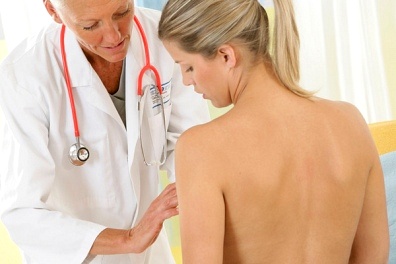Cysts can occur anywhere on the body, including the breasts of women. Let’s see how to detect breast cyst and what its treatment.
What are cysts?
Cysts are small bags filled with liquids of different consistencies. When we talk about breast cysts, we refer to these bags that are placed around the mammary glands and chest area.
But contrary to the fear that rises into the common people, breast cysts can be completely harmless and, otherwise, its early detection is essential.
How to detect breast cyst
The most common way of detecting breast cyst is with the touch perception in the breast self-exam. Under the skin, these cysts are seen as balls or lumps of varying sizes, touch quite different from normal tissue. Its may be as different from the size of peas to large bags of considerable size, and may even bulge the skin and be visible to naked eye.
The breast pain is another associated symptom, because cysts usually push the muscle or gland area. When pressure is slight, the cysts could be identified by simple signs of pain or discomfort. These symptoms usually show improvements if made slight changes in diet, such as stopping caffeine, sweets and fatty foods, although this varies in each case.
Once perceived cysts proceed to the medical consultation. The professional touch can be tested first, and then (usually) conduct an imaging technique. Ultrasound (ultrasonography) is the best method for detection and diagnosis of breast cysts, because of its consistency.
Types of breast cysts
Cysts can be classified as simple or complex, the former being generally benign, presenting themselves as bags of body fluid. For its part, the complexes are identified on ultrasound with a consistency similar to tissues, and require further analysis for identification as tumor or cancerous. To do this, the technique is commonly used needle aspiration: A thin needle is inserted into the cyst, removing a portion of its contents and proceeds to biopsy for a definitive diagnosis.
Breast cysts treatment
Breast cysts are very common today, appearing (sometimes unconscious) up to 85% of women. In the vast majority of the cases it is simple cysts, benign; do not present more than discomfort.
While it can grow over time and must keep track annual or semiannual, normally is a fairly simple treatment to remove it. Taking birth control pills or hormonal supplements is the most common, along with topical creams and gels that dissolve hormones naturally.
In extreme cases (with biopsy confirming malignancy or striking dimensions) can be completely aspirate the cyst (suck with needles) or remove it by surgical means, but this resource is reserved for serious cases.
In general, the optimum treatment is its dissolution by intake or use of products with hormonal charge.

